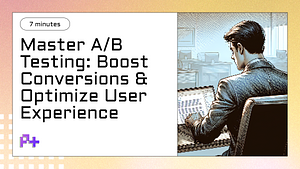1. Understanding AI Translation: What You Need to Know
AI translation has revolutionized the way we communicate across different languages. At its core, AI translation utilizes machine learning algorithms and natural language processing to convert text from one language to another. This technology has evolved significantly over the years, shifting from simple word-for-word translations to more nuanced interpretations that take context, idiomatic expressions, and cultural references into account. Understanding the mechanics behind AI translations is essential for businesses and individuals looking to leverage this tool for effective global communication.
One of the most significant advantages of AI translation is its speed and scalability. Unlike traditional translation methods, which often take time and require human expertise, AI-driven solutions can process and translate vast amounts of text in real time. This capability is particularly beneficial for businesses operating in multiple countries or those with online content that needs to be accessible in various languages. However, while AI translations are efficient, they are not without limitations. It’s crucial to recognize that while AI can handle straightforward translations well, it may struggle with complex sentences, cultural nuances, or specialized jargon. Therefore, combining AI translation with human oversight can ensure higher accuracy and context alignment.
As technology continues to advance, the future of AI translation looks promising. Innovations such as neural machine translation (NMT) are helping to create translations that are closer to human quality by considering entire sentences rather than isolated words. This progress not only improves the fluency and coherence of translations but also enhances the user experience. For businesses, investing in AI translation tools can facilitate better customer interactions, open new markets, and streamline operations. By understanding AI translations and their benefits, users can make informed decisions that enhance their communication strategies in an increasingly interconnected world.
2. Why Choose Wordvice AI’s Free Translator?
When it comes to AI translations, choosing the right tool can significantly impact the quality and efficiency of your translation tasks. Wordvice AI’s Free Translator stands out for several compelling reasons. Firstly, it leverages advanced artificial intelligence technology to provide highly accurate translations across multiple languages. This means that whether you are translating a business document, a personal letter, or academic research, you can rely on Wordvice's AI to deliver precise and context-aware translations that capture the nuances of each language. The platform continuously learns and improves, ensuring that users benefit from the latest advancements in AI translation technology.
Another key advantage of Wordvice AI’s Free Translator is its user-friendly interface, which is designed with simplicity in mind. Even if you are not tech-savvy, you can easily navigate the platform and complete your translations efficiently. The service is available online, eliminating the need for software downloads or installations, which saves time and storage space. Additionally, the free access means that users can test the tool without any financial commitment, making it an ideal choice for students, freelancers, and professionals seeking high-quality AI translations without breaking the bank.
Moreover, Wordvice AI’s Free Translator offers a variety of features that enhance the overall translation experience. Users can translate large volumes of text quickly, making it suitable for both short phrases and extensive documents. The platform also supports multiple file formats, which adds to its versatility. Furthermore, Wordvice takes user privacy seriously, ensuring that your data remains secure and confidential. With these benefits, it’s clear that Wordvice AI’s Free Translator is a smart choice for anyone in need of reliable and efficient translations powered by cutting-edge AI technology.
3. How to Effectively Use the Wordvice AI Text Translator
To effectively use the Wordvice AI Text Translator, it's essential to understand its core functionalities and how to navigate its features. The platform is designed to streamline the translation process, making it user-friendly for both casual and professional users. Start by uploading your document or pasting the text you want to translate into the designated area. The interface is intuitive, allowing you to select the source and target languages easily. Wordvice supports a wide range of languages, ensuring that your content can reach a global audience. Take advantage of the preview option to review the translated text before finalizing your changes.
Once you have your text translated, it’s crucial to assess the quality of the output. While AI translations are increasingly accurate, they might not always capture the nuances of language or cultural context. Therefore, it’s advisable to read through the translated content carefully. Look for any awkward phrasing or inaccuracies that may need manual adjustments. Wordvice also offers features such as glossary creation, which can help maintain consistency in terminology across multiple translations. This is especially useful for businesses that require a uniform voice in their communications.
Finally, to maximize the benefits of the Wordvice AI Text Translator, consider integrating it into your regular workflow. Whether you are translating marketing materials, academic papers, or personal correspondence, utilizing AI translations can save you time and resources. Additionally, you can leverage the tool for language learning by comparing original texts with their translations, enhancing your understanding of sentence structure and vocabulary in different languages. By following these steps, you can ensure that you use the Wordvice AI Text Translator effectively, making your translation process more efficient and accurate.
4. The Benefits of AI Translation for Various Document Types
AI translation technology has revolutionized the way we approach multilingual communication, offering significant advantages across various document types. One of the primary benefits of AI translations is their ability to enhance accuracy and consistency. Unlike traditional translation methods that may be subject to human error, AI-driven tools leverage vast databases and algorithms to ensure that terminology and phrasing remain consistent throughout documents. This is particularly crucial for technical manuals, legal contracts, and academic papers, where precision is paramount. As a result, businesses and organizations can trust that their critical information is conveyed accurately in multiple languages, reducing the risk of misunderstandings.
Another notable advantage of AI translations is their efficiency and speed. In today’s fast-paced world, the ability to quickly translate large volumes of content is essential for maintaining a competitive edge. Whether it’s marketing materials, user guides, or website content, AI-powered translation tools can deliver results in a fraction of the time it would take human translators. This rapid turnaround not only saves time but also allows companies to be more agile in their operations, enabling them to respond promptly to global market demands or launch localized campaigns without delays. Consequently, organizations can effectively engage with international audiences and improve their reach.
Lastly, AI translations offer cost-effectiveness, making them an appealing option for businesses of all sizes. Traditional translation services can be expensive, particularly for extensive documentation. However, AI translation tools typically operate on a subscription basis or a pay-per-use model, significantly lowering costs associated with multilingual content creation. This affordability opens up new avenues for small and medium enterprises that may have previously shied away from investing in translation services. By utilizing AI translations, these businesses can expand their global presence without breaking the bank, ultimately fostering growth and enhancing their international competitiveness.
5. Frequently Asked Questions About AI Translation Tools
AI translation tools have rapidly gained popularity, and with that comes a myriad of questions from users seeking to understand their capabilities, limitations, and practical applications. One common inquiry revolves around the accuracy of AI translations. Users often wonder how these tools compare to human translators. While AI translation tools have made significant advancements in recent years, they may still struggle with context, idioms, and cultural nuances. However, they excel in translating straightforward text and can provide speedy, cost-effective solutions for businesses and individuals needing quick translations.
Another frequently asked question pertains to the languages supported by AI translation tools. Most leading platforms, such as Google Translate, DeepL, and Microsoft Translator, offer support for a wide array of languages, often exceeding 100. This extensive range allows users to translate documents, websites, or conversations across different languages with ease. However, it’s essential to note that not all languages are treated equally; the quality of translations can vary based on the language pair. Therefore, users should conduct thorough testing on specific language combinations to gauge the effectiveness of the tool they choose.
Users also express concerns about data privacy when using AI translation tools, especially for sensitive or proprietary information. Many AI translation services utilize cloud-based systems, which can raise questions about how user data is stored and shared. To address these concerns, reputable AI translation providers often implement robust security measures, including data encryption and compliance with international privacy regulations. Users are encouraged to review the privacy policies of these tools and consider using on-premise solutions or translation software that allows for local processing of data to ensure their information remains secure.



